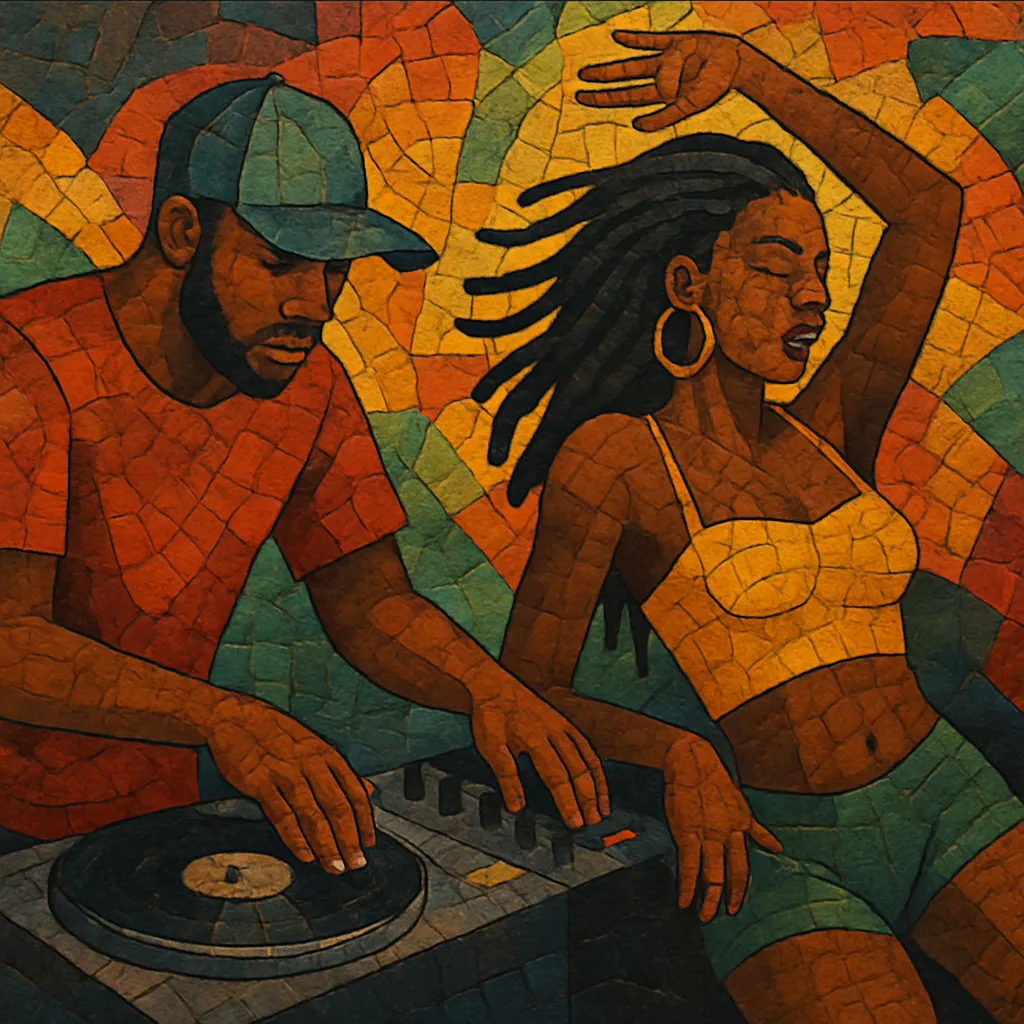Dancehall is a Jamaican popular music style that emerged in the late 1970s as a rawer, more stripped‑down offshoot of reggae.
It centers on the "riddim"—a shared instrumental backing over which multiple vocalists (deejays/singers) perform—toasts, melodies, and hooks, often in Jamaican Patois.
Compared to roots reggae, dancehall favors punchy, syncopated drums, deep sub‑bass, sparse harmony, and call‑and‑response energy rooted in sound system culture.
From the mid‑1980s onward, digital instrumentation transformed the genre (the "Sleng Teng" era), ushering in the raggamuffin sound and paving the way for global crossover in the 1990s and 2000s.
Lyrical themes range from party and dance (“bashment”) culture to social commentary, romance, bravado, and soundclash rivalries.
Dancehall grew out of Jamaica’s sound system scene as a leaner, more locally focused counterpart to roots reggae. With selectors and deejays commanding dance halls and street sessions, the emphasis shifted from harmony‑rich bands to MC‑driven performances over rhythm tracks (“riddims”). Early dancehall (often called rub‑a‑dub) spotlighted deejays like Yellowman over bass‑forward, minimal grooves crafted by studio collectives and producers aligned with top sound systems.
In 1985, Wayne Smith’s “Under Mi Sleng Teng,” produced by King Jammy, popularized fully digital riddims, marking a watershed moment. Affordable drum machines and synths made production faster and harder‑hitting, giving rise to raggamuffin (ragga). This period cemented the template: sparse, syncopated drums; heavy sub‑bass; short stabs and FX; and agile, charismatic deejay delivery.
Artists like Shabba Ranks, Super Cat, and Buju Banton carried dancehall onto global charts, while soundclash culture and dubplates amplified its competitive spirit. The riddim economy flourished—single instrumentals (e.g., “Punanny,” “Bogle,” “Showtime”) hosted many distinct voicings by different artists. Lyrically, the decade spanned party anthems to conscious messages, with ongoing debates around slackness and social themes.
Producers such as Dave Kelly, Steven “Lenky” Marsden (Diwali riddim), and Don Corleon helped catalyze a dancehall‑pop wave via artists like Sean Paul, Beenie Man, and Shaggy. Simultaneously, dancehall’s rhythmic DNA shaped reggaeton (via the Dem Bow pattern), UK grime, bubbling, and Afro‑diasporic club styles. In the 2010s–2020s, figures like Vybz Kartel, Popcaan, and Spice drove modern sounds that intersect with trap, Afrobeats, and tropical pop while keeping the sound system ethos alive.
Dancehall remains inseparable from Jamaican sound systems, where selectors, deejays, and dancers co‑create the vibe. Riddims circulate as shared canvases; voicings, remixes, dub versions, and clash‑ready dubplates keep the scene competitive and communal.


